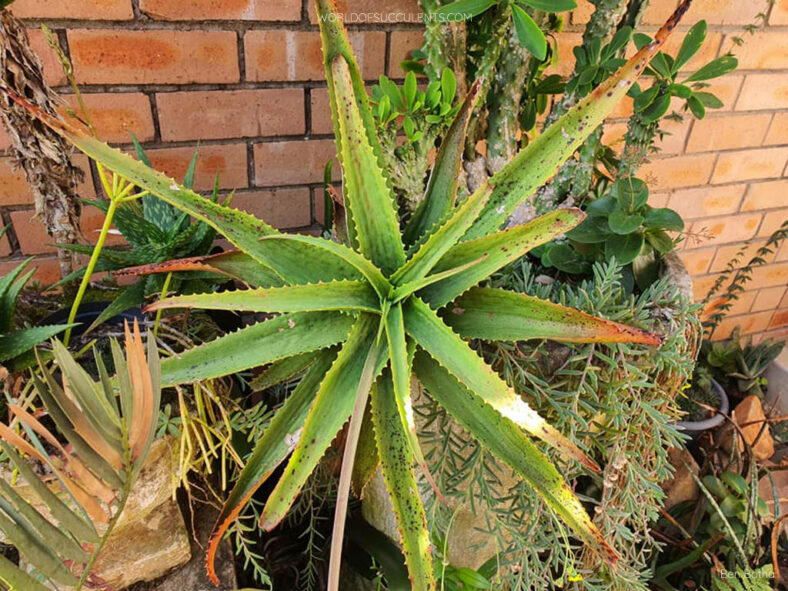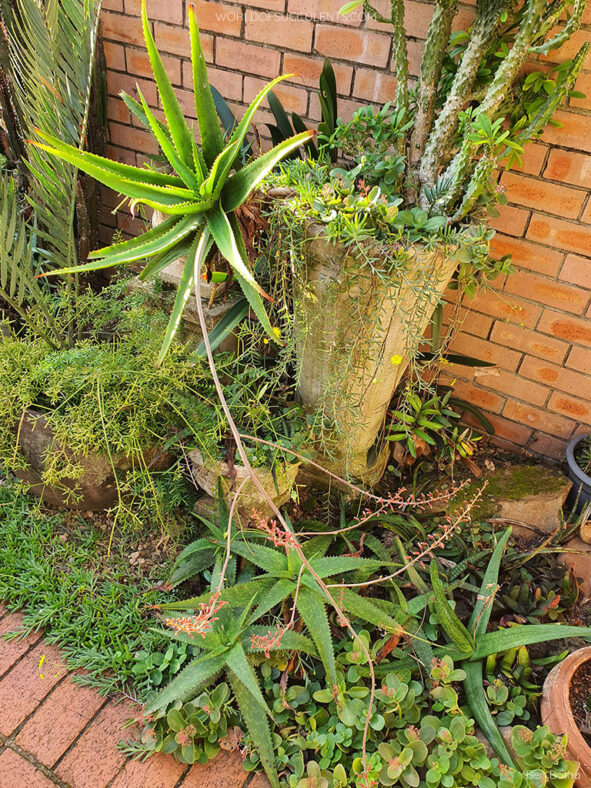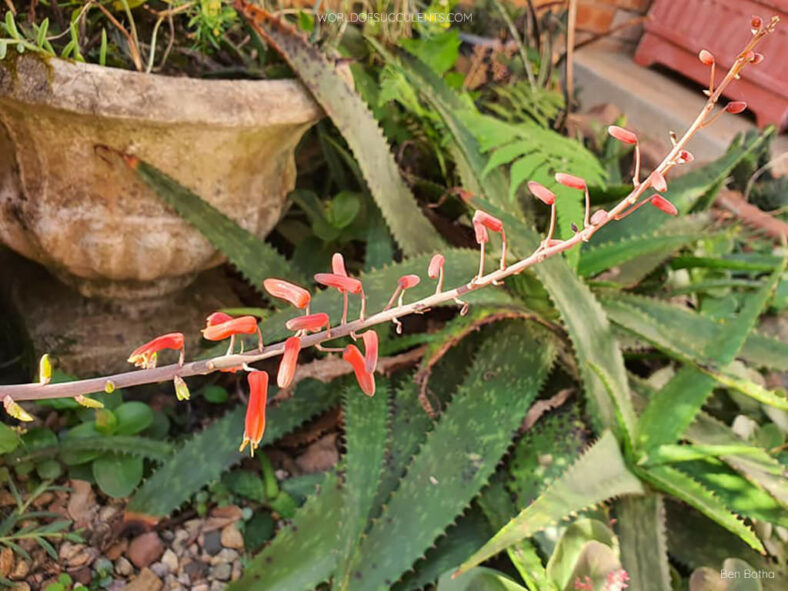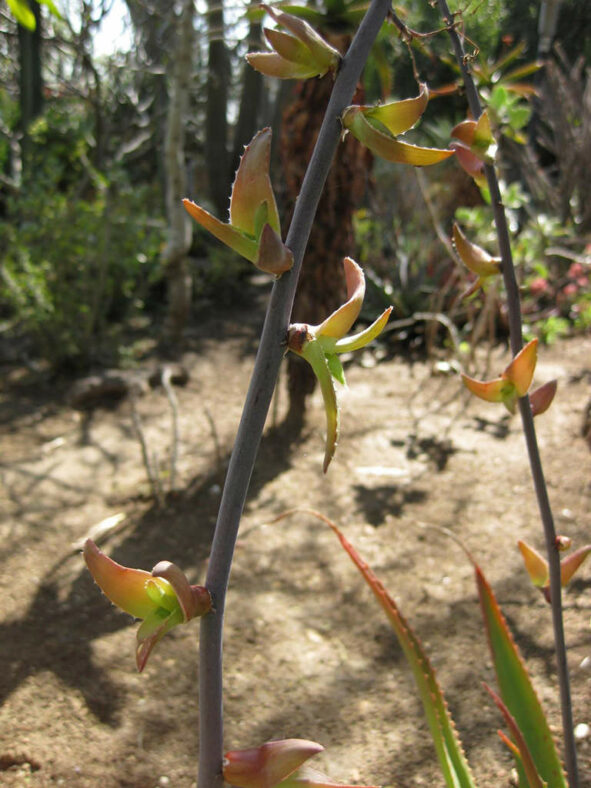Aloe bulbillifera is an interesting plant that does not produce offsets but instead grows bulbils on its inflorescences. It was first described by the French botanist Joseph Marie Henry Alfred Perrier de la Bâthie in 1926.
Scientific Name
Aloe bulbillifera H.Perrier
Synonym(s)
Aloe bulbillifera var. bulbillifera
Scientific Classification
Family: Asphodelaceae
Subfamily: Asphodeloideae
Genus: Aloe
Etymology
The specific epithet "bulbillifera" (pronounced bul-bil-LIF-er-uh) means "bulbil-bearing" and refers to the bulbils forming on the inflorescence.
Origin
Aloe bulbillifera is native to Madagascar. It typically grows on rocky slopes.
Description
Aloe bulbillifera is a succulent plant that forms a solitary rosette of green, lance-shaped leaves with small teeth along the edges. The rosette is stemless or may have a short stem and usually has 24 to 30 leaves. The leaves have a channeled upper surface and a rounded lower surface, measuring up to 24 inches (60 cm) long and 4 inches (10 cm) wide. The teeth at the base of the leaves can be up to 0.6 inches (1.5 cm) long and become smaller towards the tips.
During winter, Aloe bulbillifera produces red flowers on 2 to 3 many-branched stalks. The inflorescences usually overhang to the sides, often lie on the ground and can grow up to 8.2 feet (2.5 m) long. The tubular flowers can reach a length of up to 1 inch (2.5 cm). Bulbils emerge on the branches below the racemes, in the axils of the sterile bracts.

How to Grow and Care for Aloe bulbillifera
Light: When growing Aloe bulbillifera indoors, place it in a window with plenty of bright indirect light. Rotate the pot once or twice a week to ensure all sides of the plant receive equal lighting. Outdoors, the plant prefers light shade, especially during the hottest parts of the day.
Soil: Great drainage is essential for growing this plant because too much moisture for an extended period can cause root rot. Use commercial soil for succulents, or make your own well-draining mix.
Temperature: When temperatures shift below 50 °F (10 °C), it is time to bring this plant inside. It tolerates heat fairly well but will not survive a hard frost. Aloe bulbillifera grows best in USDA Plant Hardiness Zones 9b to 11b, with average minimum winter temperatures ranging from 25 to 50 °F (-3.9 to 10 °C).
Watering: This plant needs regular watering but can tolerate drought conditions for short periods. Water deeply, but only when the soil is completely dry to the touch, and do not let water stand in the rosettes. Cut back on watering during the winter months.
Fertilizing: Although it generally does not require fertilizer, Aloe bulbillifera will benefit from extra nutrients. Use a water-soluble fertilizer diluted to half the recommended strength.
Repotting: Repot only as needed during spring. Pick a container that is one size larger and has drainage holes.
Propagation: Between late spring and early summer, bulbils can be removed from inflorescences to propagate Aloe bulbillifera and create new plants.
Learn more at How to Grow and Care for Aloe.
Toxicity of Aloe bulbillifera
Aloe bulbillifera is non-toxic to people but is mild to moderately toxic to pets.
Links
- Back to genus Aloe
- Succupedia: Browse succulents by Scientific Name, Common Name, Genus, Family, USDA Hardiness Zone, Origin, or cacti by Genus
Photo Gallery
Click on a photo to see a larger version.


